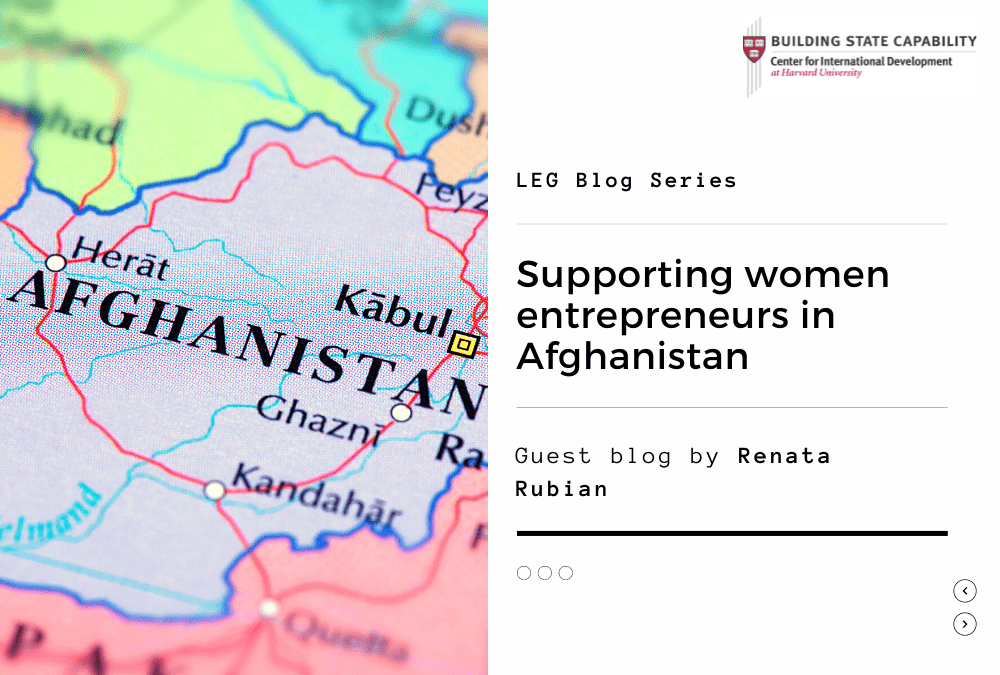Guest blog by Renata Rubian
- What are some key ideas/learnings that you will take away from this course?
I have truly enjoyed my experience with the Harvard Leading Economic Growth course. It is a pleasure to experience the dynamics between the brilliant duo – Prof. Ricardo Hausmann and Prof. Matt Andrews – given their approaches and explanations are complementary. Some of my key take away include:
(i) Understanding inequality as a significant cost and impediment to sustainable economic growth, which elevates the need to think about how to generate shared prosperity and growth that is inclusive by looking at multidimensional aspects of inequality. These include disparity on income, inequalities because of gender, geography (spatiality), digital divide, inequalities of capabilities (capacities differ among individuals, institutions, societies), etc.
(ii) The need to understand a problem before attempting to think of a solution. Understanding that a complex problem can be broken in bite sizes, but the nature of the problem also evolves, and it is important that understanding a problem is an iterative process (that also adapts and evolves). The dynamic nature of a development problem is important to highlight. Once a constraint/bottleneck is removed, another constraint starts to become more binding and so forth. By identifying the binding constraints, prioritizing and sequencing them – this process makes it more feasible for countries to tackle complex situations.
(iii) The role of public investments to facilitate transformational shifts, including the need for a high bandwidth organization that is capable to facilitate connections and information across sectors/knowledge areas etc.
- What progress did you make or what insights did you have about your growth challenge throughout the 10-week time period?
My main challenge focuses on how to promote economic growth in a fragile conflict-affected country such as Afghanistan, with a focus on vulnerable groups, in particular women and girls, and urban settings. This could eventually reduce the need for humanitarian assistance and lead to a development pathway that promotes sustainable livelihoods and income generation. Gender equality is an important dimension as women are the backbone of the local economy in Afghanistan, including the informal sector. Urbanization patterns are also relevant with the dynamics between rural-urban and wide territorial inequalities. A deep-dive will be provided for the Kabul region. The city of Kabul, with over 4.3 million inhabitants, is one of the fastest-growing cities in the world. To accommodate this growth, informal settlements have sprawled.
A key strategic entry point is supporting women entrepreneurs, with a focus on micro small and medium size enterprises (MSMEs), including with viable options to facilitate home-based micro-small business through the application of digital technologies for marketing, selling/trade, and delivery locally and internationally would attract many partners.
Learning from other similar fragile contexts to delineate possible actions in a restrictive environment – such as in Yemen, Somalia, Iraq, Palestine/Gaza Strip – could provide some best practices on how to promote initiatives to support MSMEs led by women in Afghanistan.
Next steps to gauge the feasibility of the proposal would include:
- Identification of formal and informal business managed by women; mapping what the products and services women business are focusing on;
- Understand what barriers women are facing to increase productivity and to trade locally or internationally;
- Understand limitation in credit or productive assets faced by women;
- Increase participation of women in the local economy via connectivity (e.g., marketing, sales, and receipt of payments);
- Learn from other similar contexts to delineate possible actions in a restrictive environment (e.g. Yemen, Somalia, Iraq previously, Palestine/Gaza Strip etc).
- Understand the coverage of the digital economy to tap on existing channels and ecosystem to expand to women businesses.
- How are you using or will you use what you have learned in this course?
I would like to use the Metroverse to select cities in Asia and Pacific to better understand their economic complexity and space to generate growth, but at the same time a growth that is sustainable (green) and inclusive (shared prosperity).
Some cities for the AP region are already included in the database of Metroverse, but others are not as yet.
- What open questions do you have that you wish the next course could answer?
The course could be more explicit about the absolute need or not of a public entity in managing/leading economic growth in a particular country/designated area. Most examples I have seen require investments and a deliberate effort that usually comes from a public entity (e.g., moonshot strategies). But what happens in those cases where a public entity is not clearly defined or is absent, or the leadership is contested, or the public entity is not legally recognized by the international community (e.g., the current Taliban Administration in Afghanistan, the Government in Myanmar comprised by the Military Junta etc). What are the alternatives to fill that void in the absence of a public institution that can play the leading role? Are there strong/tested cases where the private sector or community driven approaches have managed to lead transformational results for economic growth? If yes, are those examples of large scale or micro/limited application?
This is a blog series written by the alumni of the Leading Economic Growth Executive Education Program at the Harvard Kennedy School. 61 Participants successfully completed this 10-week online course in December 2021. These are their learning journey stories.
